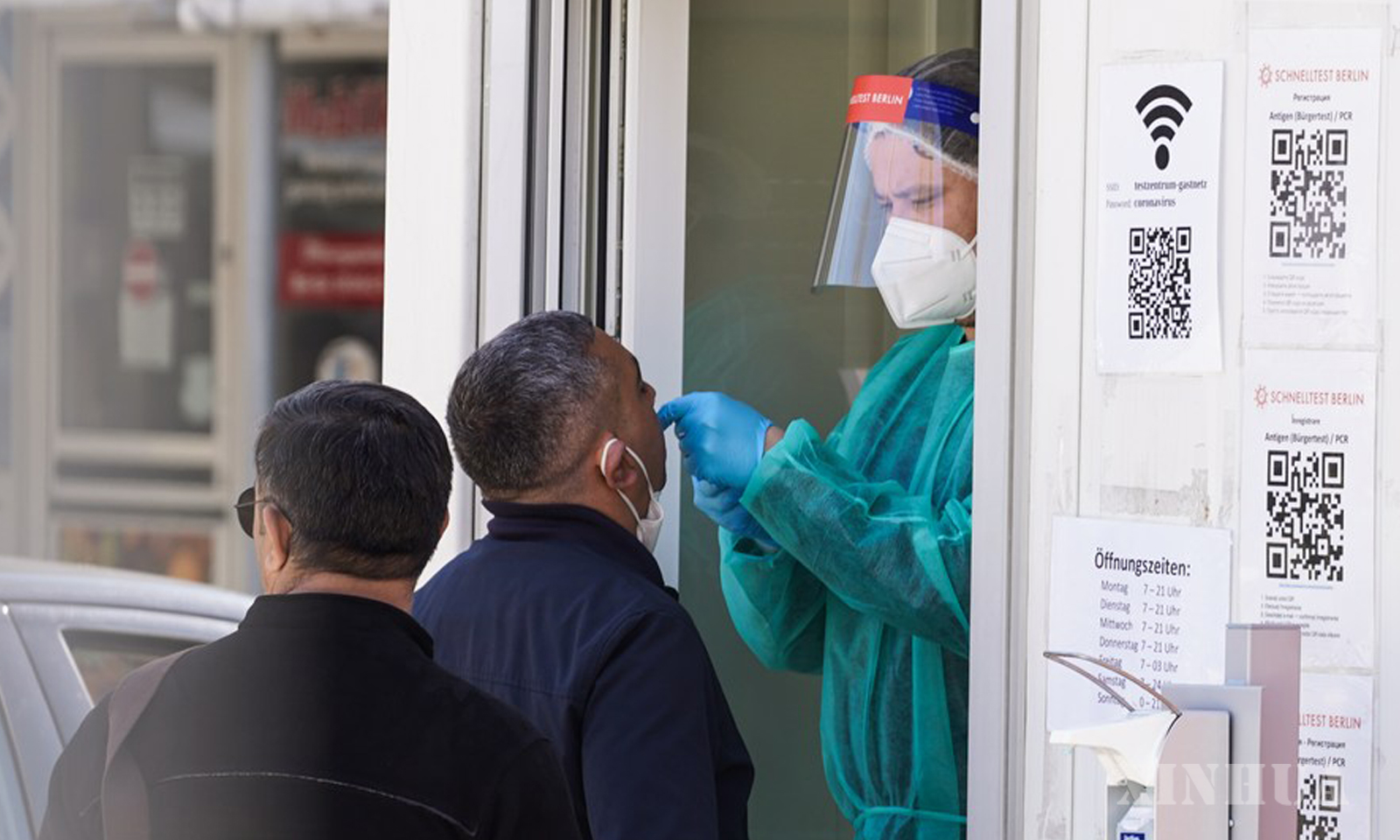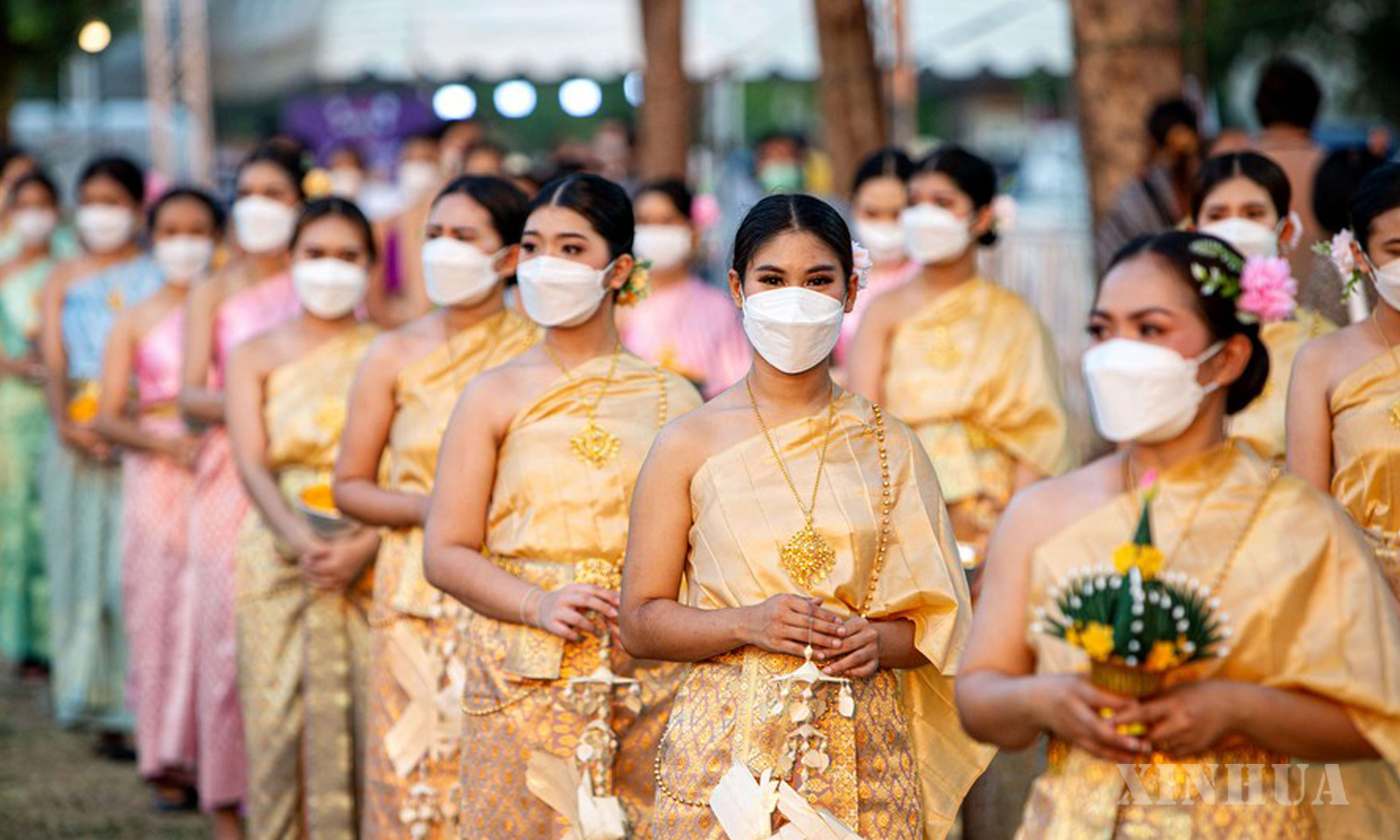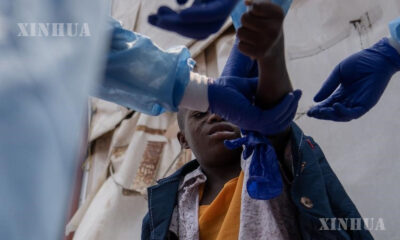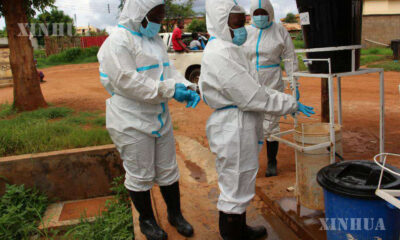News
COVID-19 ကပ်ရောဂါ မပြီးဆုံးသေးကြောင်း WHO ပြောကြား

ဂျီနီဗာ ၊ ဧပြီ ၂၇ ရက်(ဆင်ဟွာ)
ကမ္ဘာတစ်ဝှမ်း ထုတ်ပြန်နေသည့် COVID-19 ရောဂါဖြစ်ပွားမှု နှင့် သေဆုံးမှုများသည် ဆက်လက်ကျဆင်းနေသော်လည်း အဓိကအားဖြင့် စမ်းသပ်စစ်ဆေးမှုနှုန်း ကျဆင်းခြင်းကြောင့် ဖြစ်ပြီး ကပ်ရောဂါသည် မပြီးဆုံးသေးကြောင်း ကမ္ဘာ့ကျန်းမာရေးအဖွဲ့အစည်း(WHO) က ဧပြီ ၂၆ ရက်တွင် သတိပေးခဲ့သည်။ပြီးခဲ့သည့်အပတ်တွင် WHO ထံသို့ ကိုရိုနာဗိုင်းရပ်စ်နှင့်ဆက်စပ်သည့် သေဆုံးမှု ၁၅,၀၀၀ ကျော် အစီရင်ခံခဲ့ကြောင်း ၊ ၂၀၂၀ ပြည့်နှစ် မတ်လမှစတင်ကာ ကူးစက်မှု အနည်းဆုံးရက်သတ္တပတ်ဖြစ်ကြောင်း WHO ညွှန်ကြားရေးမှူး Tedros Adhanom Ghebreyesu က သတင်းစာရှင်းလင်းပွဲတွင်ပြောကြားခဲ့သည်။

ဗြိတိန်နိုင်ငံ လန်ဒန်မြို့ရှိ အမျိုးသားအဆင့် COVID အထိမ်းအမှတ်တံတိုင်းအား ၂၀၂၂ ခုနှစ် မတ်လ ၂၇ ရက်တွင် တွေ့ရစဉ်(ဆင်ဟွာ)
သို့သော်လည်း နိုင်ငံအများအပြားသည် စမ်းသပ်စစ်ဆေးမှု လျော့နည်းသွားသည့်အတွက် သတိဖြင့် အားတက်စေသည့်လမ်းကြောင်းကို အဓိပ္ပာယ်ဖွင့်ဆိုသင့်ကြောင်း ၊ ရလာဒ်အနေဖြင့် WHO သည် ကူးစက်ပြန့်ပွားခြင်း ၊ အကျိုးသက်ရောက်ခြင်း နှင့်ပတ်သက်၍ သတင်းအချက်အလက် လျော့နည်းကာ လက်ခံရရှိနေကြောင်း ၎င်းက ပြောကြားခဲ့သည်။

ဂျာမနီနိုင်ငံ မြို့တော် ဘာလင်မြို့၌ အမျိုးသားတစ်ဦးက COVID-19 ရောဂါ စစ်ဆေးနေသည်ကို ၂၀၂၂ ခုနှစ် မတ် ၂၄ ရက်တွင် တွေ့ရစဉ်(ဆင်ဟွာ)
“ဒါက ကူးစက်ပြန့်ပွားမှု နဲ့ ဆင့်ကဲဖြစ်စဉ်တွေရဲ့ ပုံစံတွေကို ပိုပြီးတော့ မမြင်နိုင်အောင် ဖြစ်လာပါတယ်။ဒါပေမယ့် ဒီဗိုင်းရပ်စ်ကို နိုင်ငံတွေက ရှာနေတာကို ရပ်လိုက်တဲ့အတွက်ကြောင့်ပါ ၊ ပျောက်မသွားပါဘူး ။ ဒါက ပြန့်နှံ့နေဆဲ ၊ ပြောင်းလဲနေဆဲ ၊ လူတွေ သေဆုံးနေဆဲ ဖြစ်ပါတယ်။”ဟု WHO ညွှန်ကြားရေးမှူးက ပြောကြားခဲ့သည်။

ထိုင်းနိုင်ငံ Ayutthaya မြို့၌ Songkran ပွဲတော် အထိမ်းအမှတ် လမ်းပေါ်စီတန်းလှည့်လည်မှုတစ်ခုအား ၂၀၂၂ ခုနှစ် ဧပြီ ၂၃ ရက်တွင် တွေ့ရစဉ်(ဆင်ဟွာ)
သေစေနိုင်သောဗိုင်းရပ်စ်တစ်မျိုး ရောက်ရှိလာသည့်အခါတွင် ပျော်ရွင်မှုချမ်းသာသုခနှင့် ပြည်စုံမည်မဟုတ်ကြောင်း ၊ WHO အနေဖြင့် နိုင်ငံများအားလုံးအား စောင့်ကြည်ခြင်းအား ထိန်းသိမ်းထားရန် ဆက်လက်တောင်းဆိုကြောင်း ၎င်းက ပြောကြားခဲ့သည်။
COVID-19 ကပ်ရောဂါ အရေးပေါ်အလွန် အဆင့်သစ်တစ်ခုဝင်ရောက်ရန် ဥရောပသမဂ္ဂ(EU)၏ မကြာသေးမီက ဆုံးဖြတ်ချက်အား တုံ့ပြန်သည့်အနေဖြင့် WHO ကျန်းမာရေးအရေးပေါ်အစီအစဉ်၏ အလုပ်အမှုဆောင်ညွှန်ကြားရေးမှူး Mike Ryan က ယင်းသည် ဗိုင်းရပ်စ်အပေါ် အာရုံစူးစိုက်မှု ပျောက်ဆုံးရမည့် အချိန်မဟုတ်သကဲ့သို့ ဆက်လက်ပြောင်းလဲဖြစ်ပေါ်ရန် ၎င်းတို့၏ အလားအလာကို မျက်ခြေပြတ်ရမည့် အချိန်လည်း မဟုတ်ကြောင်း သတိပေးခဲ့သည်။
“အဖြစ်မှန်ကတော့ ကျွန်တော်တို့ ဒီထဲက မထွက်နိုင်သေးပါဘူး။”ဟု ၎င်းက ပြောကြားခဲ့သည်။
WHO ကျန်းမာရေးအရေးပေါ်အစီအစဉ်၏ နည်းပညာပိုင်းဆိုင်ရာ ခေါင်းဆောင် Maria van Kerkhove က မကြာသေးမီက အပြုသဘောဆောင်သည့်လမ်းကြောင်းများ ရှိနေသော်လည်း စမ်းသပ်မှုနည်းဗျူဟာများ ကြီးမားသော ပြောင်းလဲမှုများ နှင့် ကမ္ဘာတစ်ဝှမ်းတွင် လုပ်ဆောင်နေကြသည့် စမ်းသပ်မှုအရေအတွက်များသည် ကြီးကြီးမားမား လျော့နည်းသွားခြင်းတို့ကြောင့် ကမ္ဘာတစ်ဝှမ်း ထုတ်ပြန်နေသည့် ရောဂါဖြစ်ပွားမှုအရေအတွက်အား ၎င်းအနေဖြင့် ယုံကြည်မှုနည်းပါးခဲ့ကြောင်း ပြောကြားခဲ့သည်။
“အပြုသဘောဆောင်သည့်ဘက်က ကြည့်ပါက အပြောင်းအလဲတစ်ခုလို့ မြင်တွေ့ရပါတယ်။ကျွန်မတို့ဟာ ကပ်ရောဂါရဲ့ တစ်မူထူးခြားတဲ့အဆင့်တစ်ခုမှာ ရှိနေတာကတော့ သေချာပါတယ်။ ဒါပေမယ့် ကပ်ရောဂါရဲ့အလယ်ခေါင်မှာ အများကြီး ရှိနေအုန်းမှာ ဖြစ်ပါတယ်။ပြီးတော့ ဒါက ကမ္ဘာလုံးဆိုင်ရာပြဿနာတစ်ခုအဖြစ် ရှိနေဆဲ ဖြစ်ပါတယ်။”ဟု ၎င်းက ပြောကြားခဲ့သည်။
“အခုအချိန်က နောက်ပြန်လှည့်ဆုတ်ခွာရမယ့် အချိန်မဟုတ်ပါဘူး ။ အခုက လူတွေ အသက်ရှင်သန်ရေး ၊ စီးပွားရေးက လမ်းကြောင်းပေါ် ပြန်ရောက်ဖို့ နဲ့ လူတွေရဲ့ သက်မွေးဝမ်းကျောင်းတွေကို ကာကွယ်ဖို့ အာမခံနိုင်ရေးနဲ့ မူဝါဒအသစ်ကို အကောင်အထည်ဖော်ဖို့ အမှန်တကယ်ခိုင်မာအားကောင်းရမယ့် အချိန်ဖြစ်ပါတယ်။”ဟု WHO ကျန်းမာရေးအရေးပေါ်အစီအစဉ်၏ နည်းပညာပိုင်းဆိုင်ရာ ခေါင်းဆောင် Maria van Kerkhove က မှတ်ချက်ပြုခဲ့ကြောင်း သိရသည်။ (Xinhua)
#WHO #pandemic #COVID-19 #cases #ကမ္ဘာ့ကျန်းမာရေးအဖွဲ့ #ကပ်ရောဂါ #ရောဂါဖြစ်ပွားမှု #ဆင်ဟွာ #xinhua #myanmar #xinhuamyanmar
…………………………………………
(English Version)
COVID-19 pandemic not over yet: WHO
GENEVA, April 26 (Xinhua) — Even though the number of globally reported COVID-19 cases and deaths continues to decline, largely due to a drop in testing rates, the pandemic is not over, the World Health Organization (WHO) warned here on Tuesday.
Last week, just over 15,000 coronavirus-related deaths were reported to the WHO, the lowest weekly total since March 2020, WHO Director General Tedros Adhanom Ghebreyesus told a press briefing.
However, the encouraging trend should be interpreted with caution, as many countries have scaled back on testing, and as a result “the WHO is receiving less and less information about transmission and sequencing,” he said.
“This makes us increasingly blind to patterns of transmission and evolution. But this virus won’t go away just because countries stop looking for it. It’s still spreading, it’s still changing and it’s still killing,” Tedros said.
“When it comes to a deadly virus, ignorance is not bliss. The WHO continues to call on all countries to maintain surveillance,” he said.
Responding to the European Union’s (EU) recent decision to enter a new post-emergency phase of the COVID-19 pandemic, Mike Ryan, executive director of the WHO Health Emergencies Program, cautioned that this is not the time to lose focus on the virus nor on its potential to continue to evolve.
“The fact is that we’re not out of this yet,” he said.
Maria van Kerkhove, technical lead for the WHO’s Health Emergencies Program, said that despite the recent positive trends, she had “little confidence in the number of cases being reported around the world” due to the massive changes in testing strategies and the huge reductions in the number of tests being performed around the world.
“On the positive side, we do see a change. We are in a different phase of this pandemic, certainly, but we are still very much in the middle of this pandemic, and this is still a global problem,” she said.
“Now is not the time to retreat. Now is the time to really strengthen what we have put in place and ensure that we keep people alive, and we get our economies back on track and we save people’s livelihoods,” she noted. ■
Photo 1 – Pedestrians walk through Grand Central Station in New York, the United States, March 28, 2022. (Photo by Michael Nagle/Xinhua)
Photo 2 – A woman puts a flower on the National COVID Memorial Wall in London, Britain, March 27, 2022. (Xinhua/Li Ying)
Photo 3 – A man has a COVID-19 test at a test station in Berlin, capital of Germany, on March 24, 2022. (Photo by Stefan Zeitz/Xinhua)
Photo 4 – Performers participate in a street parade celebrating the Songkran Festival in Ayutthaya, Thailand, April 13, 2022. (Xinhua/Wang Teng)






